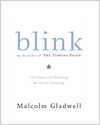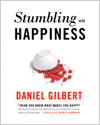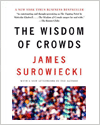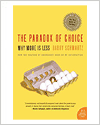Just about every Web application includes some presentation and selection of choice within the user interface. As a result, I’ve been tuning in to what the experts have to say about how we make decisions. Here’s a summary of the theories of several authors I’ve heard speak on this topic in the past two years:

Blink by Malcom Gladwell
Instantaneous decision-making happens within our subconscious whether we know it or not. In some cases, the overabundance of data can cloud our ability to listen to the results of our subconscious decision-making. Gladwell describes several situations in which too much information resulted in poorer decisions than the process he termed thin-slicing: the ability of our unconscious to find patterns in situations and behavior based on narrow slices of experience. Read the full post about Gladwell's book.

Stumbling on Happiness by Dan Gilbert
In a nutshell, Dan presented a deviously simple formula for decision-making: expected happiness = odds of gain X value of gain. In other words, how good a decision is depends on the risk (odds) and the size of the pay-off (value). The problem is people are quite bad at estimating both odds and value and the reasons for this are tied to how we make sense of (perceive) the world around us. Read the full post about Gilbert's talk.

Wisdom of Crowds by James Surowiecki
Contrary to common belief, James argued that under the right circumstances groups of people could be smarter than expert individuals at making the right decision. The reason collective intelligence can arrive at a good decision is that every individual in the group has some piece of information about the solution as well as some misconceptions or incorrect assumptions. When put together, each individuals errors fall off and their unique perspectives combine to create the right answer. There are, however, circumstances that need to exist for the wisdom of crowds to work effectively. Read the full post about Surowiecki 's talk.
 The Paradox of Choice
by Barry Schwartz
The Paradox of Choice
by Barry Schwartz
When people have no choice, life is miserable. As you start adding options, you increase wellbeing. However, you reach a point where the curve flattens out and there are diminishing marginal effects. At a point in the curve, satisfaction drops and you are worse off than when you were neutral. The goal is to find the sweet spot on the "number of choices available" curve. Read the full post about Schwartz 's talk.
Also of interest to this topic is the six-part conversation between Gladwell and Surowiecki in Slate magazine where they discuss the differences between Blink and The Wisdom of Crowds.